I used to be afraid of exotic pets. I thought they look a little scary and hostile. However, after working in a pet shop for 2 months during my first year in university, that perception changed.
I had to take care of two bearded dragons that were for sale. I was terrified of them because they looked aggressive. The thing I could not accept the most was the mealworms that I have to feed them with.
However, slowly but surely, I got used to them and I even mustered up enough courage to pet them. They did not feel soft or hairy like dogs or cats that I was used to. Instead, they feel cold, slightly scaly, and not very rough to my surprise.
After I got used to them, I would carry them around the shop on my shoulder while I went about my daily tasks. They would not move much. They would just perch on my shoulder like a parrot on a pirate’s shoulder.

Whenever people saw the bearded dragons, their first reaction was fear and then curiosity. Some people could not even look at them but some were brave enough to pet them. That was when I started to develop an interest in bearded dragons.
When I brought up the idea of owning a bearded dragon to my friends and family, their first reaction was disgust. I did not blame them because that was my reaction too before I knew how gentle they were.
There were so many kinds of exotic animals out there and bearded dragons are just one of the many. Since I never owned any exotic pets before, I figured it would be wise to interview three exotic pet owners who have the relevant experiences to talk about the reality of owning exotic pets.
Sher Lynn Used to Own A Pop-Up Store

When Sher Lynn was young, she thought house lizards were cute when she found them stuck in the kitchen sink or in the toilet.
“I would move them to safer ground. I was not scared of them at all!”
“My mom would then use me to get rid of all the pests in the house. On the other hand, my dad thought it was cool and taught me how to catch spiders under leaves and put them inside matchboxes.”
Then, she developed an interest in these exotic animals that people would consider as disgusting. She found them to be quite gentle in fact.
“Last time, a snake came into my neighbourhood. As it was fleeing, a neighbour whacked it to death, but it wasn’t doing any harm!”
Sher Lynn always felt bad for the animals, who were simply trying to survive and didn’t know any better.
“We’re the ones who are taking over their homes and they are only defending themselves out of self-preservation.”
“I do not have a favourite species of animal, but I do have a female hedgehog that was close to me a long time ago. She passed away in old age. I still miss her now and again.”

She started her own exotic pet shop
After that, it inspired her to start a pop-up store for exotic animals to show people how gentle the animals were.
Her mantra with all life is: “We don’t need to immediately settle things with violence. They’re just misunderstood.”
“We had hognose snakes, ball pythons, corn snakes, chameleons, fat tail geckos, leopard geckos, sand skink, and bearded dragons. As for the arthropods, I had scorpions, giant millipedes, and tarantulas. For mammals, I had hedgehogs and sugar gliders.”
At one point, Sher Lynn had up to 15 types of exotic pets in her pop-up store.
“We didn’t keep venomous snakes. The only venomous animal we exhibit was the Asia forest scorpion but they’re so tame I never got into an accident with it before.”
Sher Lynn said when you’re handling a scorpion, you have to grab them by the tail.
“They won’t sting you if you don’t harm them. They’re actually very gentle beings.”
“Try not to scare them. To the animals, our hands and open palms look like the mouth of a predator, so be careful how you approach the animals.”

Sher Lynn said that when hedgehogs feel threatened, they will curl up and harden their quills. Then, they will start sniffing before they fully uncurl from their cute little ball shape.
As for tarantulas, they will walk up to your palm when you approach them calmly and slowly. However, if you shock them accidentally, they will use their hind legs to brush off the fur of their butts as self-defense. The hair will then cause itchiness to the skin.
Snakes will hide and go to a corner depending on how tame it is. They might curl their bodies into an ‘S’ shape like a spring being pressed. When that happens, it’s time for you to back away. The fear of aggression may cause it to jump at you. Once they uncurl themselves, try again in a less noisy environment and approach them with your hand.
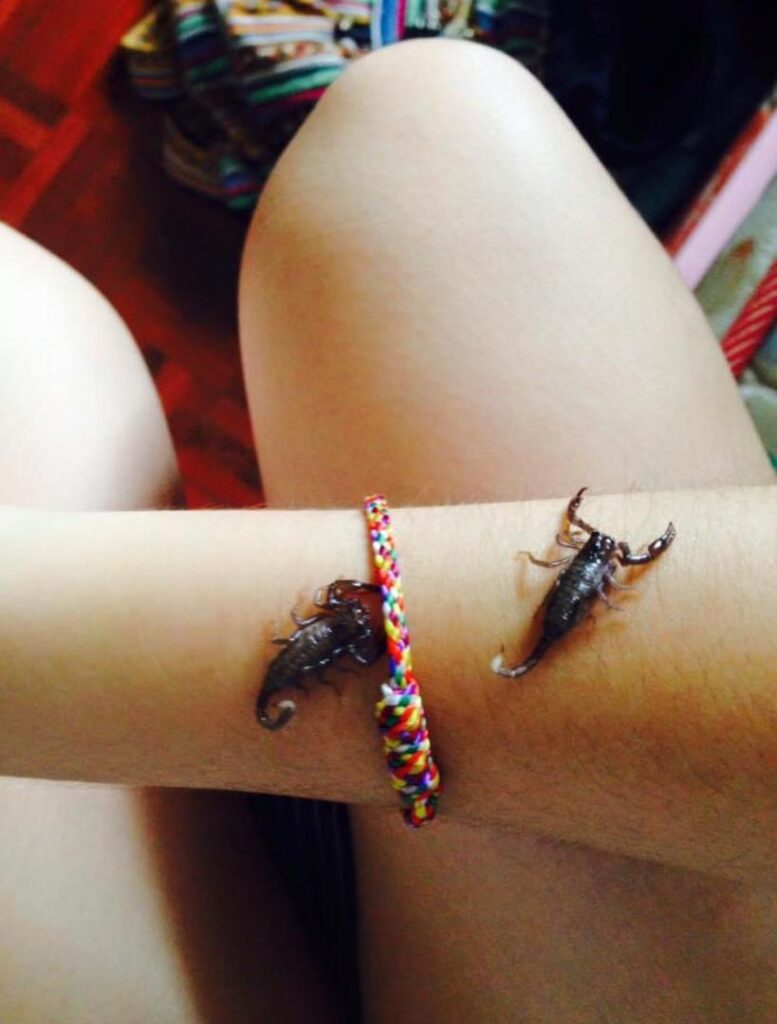
Sher Lynn handles her pets by understanding their habits and needs
“I borrowed the snakes from my friends because my parents don’t allow snakes at home.”
“And I can’t bear the fact that I have to feed them baby rats, or pinkies as we call them. Mice are very cute too!”
“As for other reptiles like chameleons and bearded dragons that were mine, I would feed them with live mealworms and crickets.”
Sher Lynn recalled the time her geckos ran out and how she managed to get them back to their cages safely.
“I know their habit, so I know where to find them.”
“They would usually be in darker and covered areas like under sofas or behind shelves. They would look for a place to hide when they’re out and about because they’re easily spooked.”
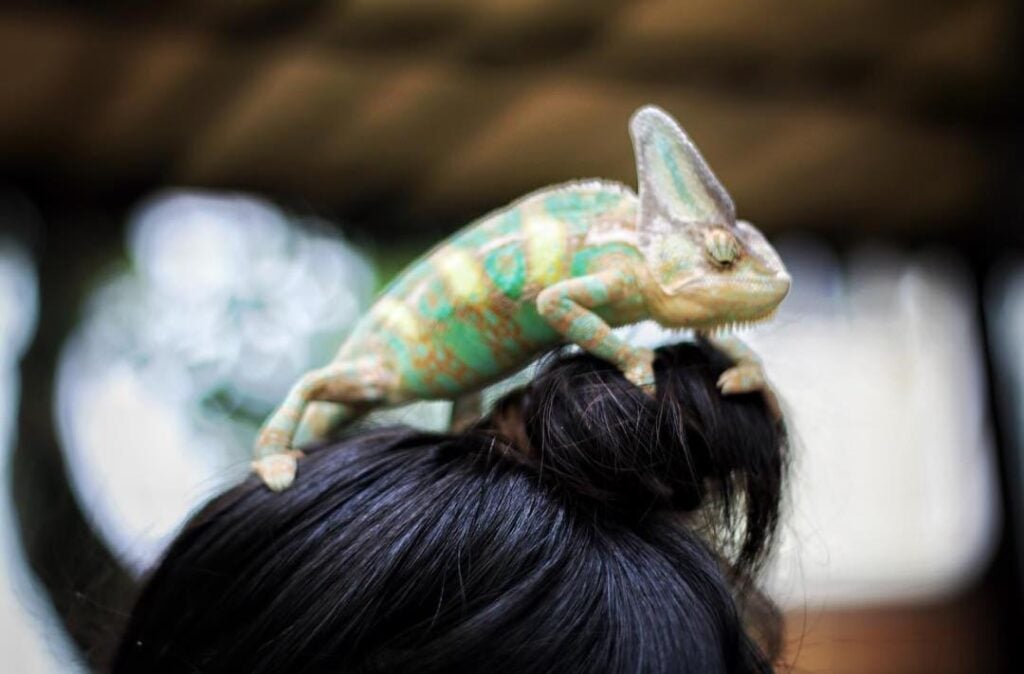
She said that it was easy to take care of the animals compared to dogs and cats as they mostly spend time in tanks or cages. It is important to bond with them to make sure they are tame.
“It usually takes up to a total of 2 hours a week.”
“I also talk to them when I bring them out or when I feed them. Not a full conversation though, that would be funny.”
“I separate the males and the females so they rarely fight with each other. Also, most exotic animals will live in solitary so it’ll be difficult for them to stir a fight.”
Breeding baby hedgehogs
Aside from owning a pop-up store, Sher Lynn also bred hedgehogs. She said that it was pretty easy as hedgehogs are more related to pigs than they are to porcupines.
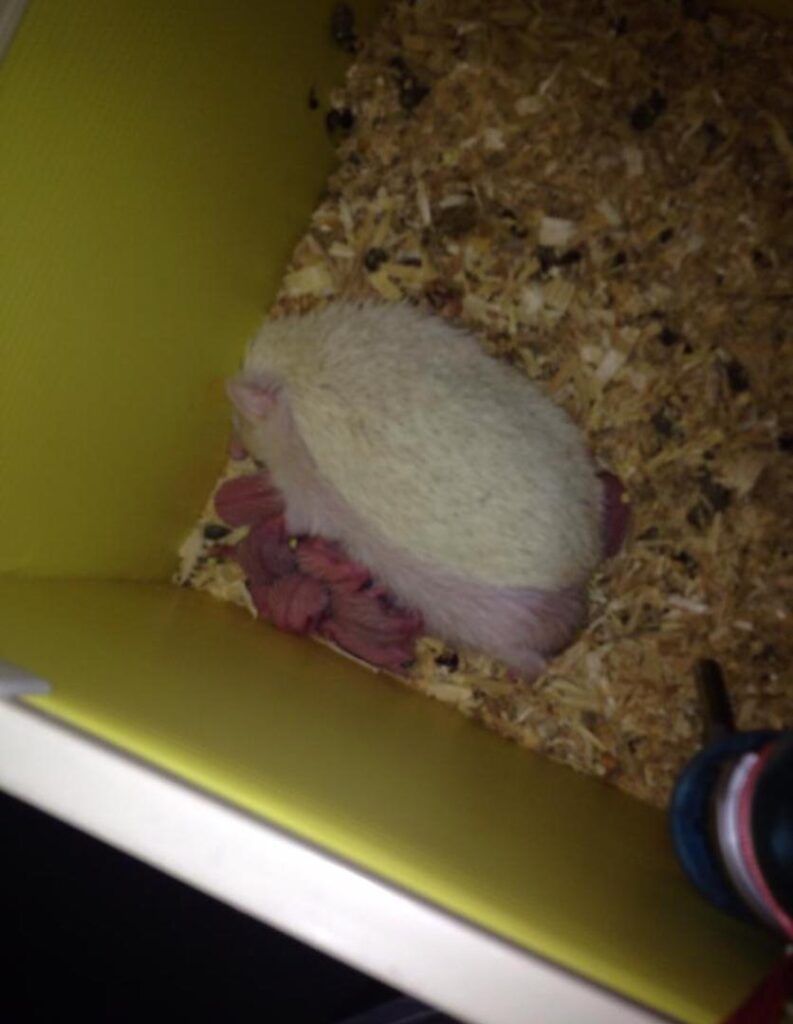
“We know how pigs are natural birth givers. They will give birth to up to 8-10 hoglets in one go.”
When she was in primary school, her parents wouldn’t allow her to keep dogs so they compromised and got her a hamster instead.
When the hamsters gave birth, her father would ask her to sell the babies back to the pet shop.
“And that was how I learned to make my own pocket money!”
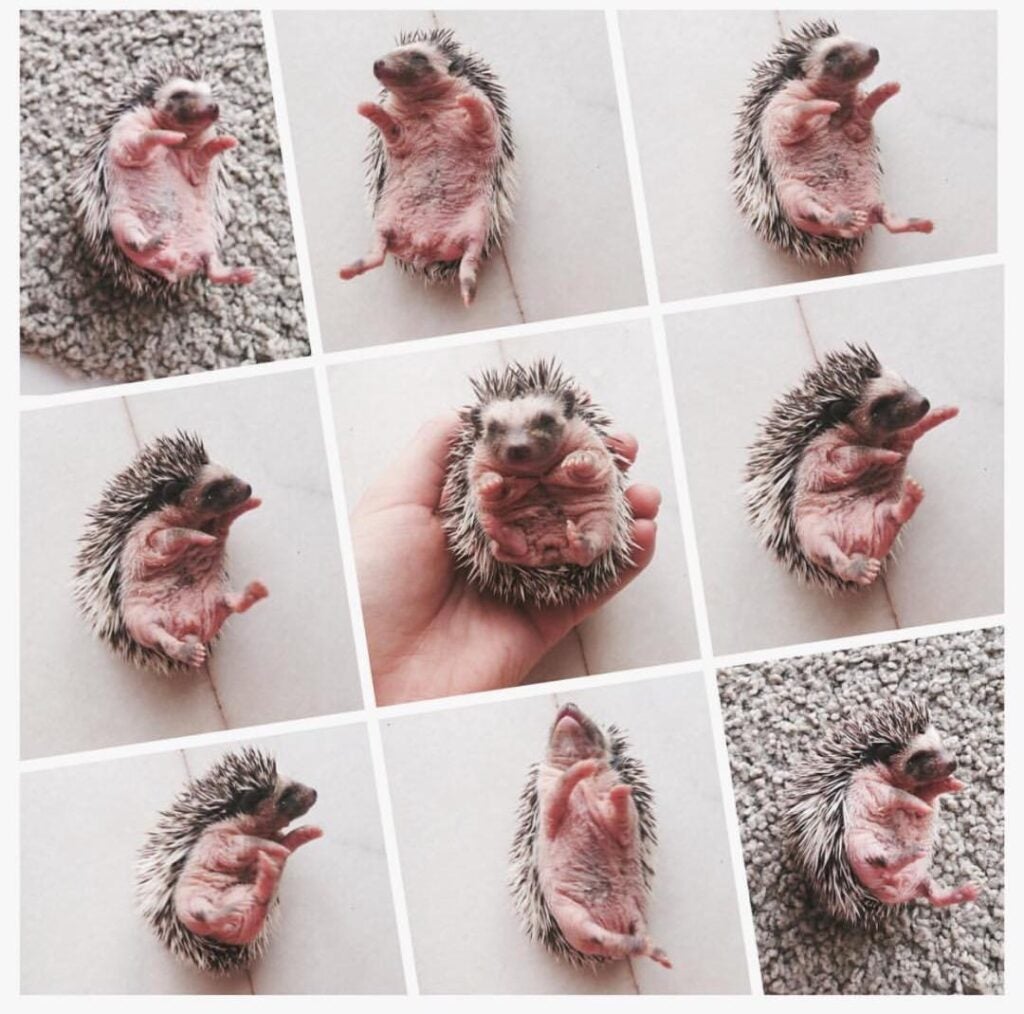
Then, during secondary school, she got bored with hamsters and started breeding hedgehogs instead. She only sold them online with only 9 batches a year because she only had three pairs of hedgehogs.
“I won’t allow the sows (female hedgehogs) to give birth more than 3 times a year.”
“I only sold and delivered them throughout Penang island and the mainland. I also offered hedgehog taming services. It was fun.”
Sher Lynn stated that hedgehogs are prone to skin fungal infections because of the humid weather in Malaysia. After some incidents, she contacted a supplier for the specific cream that could cure the infections.
“A lot of owners bought hedgehogs only to realize that they’re scared to bath the hedgehogs. Eventually, the hedgehogs will end up with skin diseases.”
“A few of my customers contacted me when that happened and I would go over to teach them how to bathe their hedgehogs and then properly nurse them back to health.”
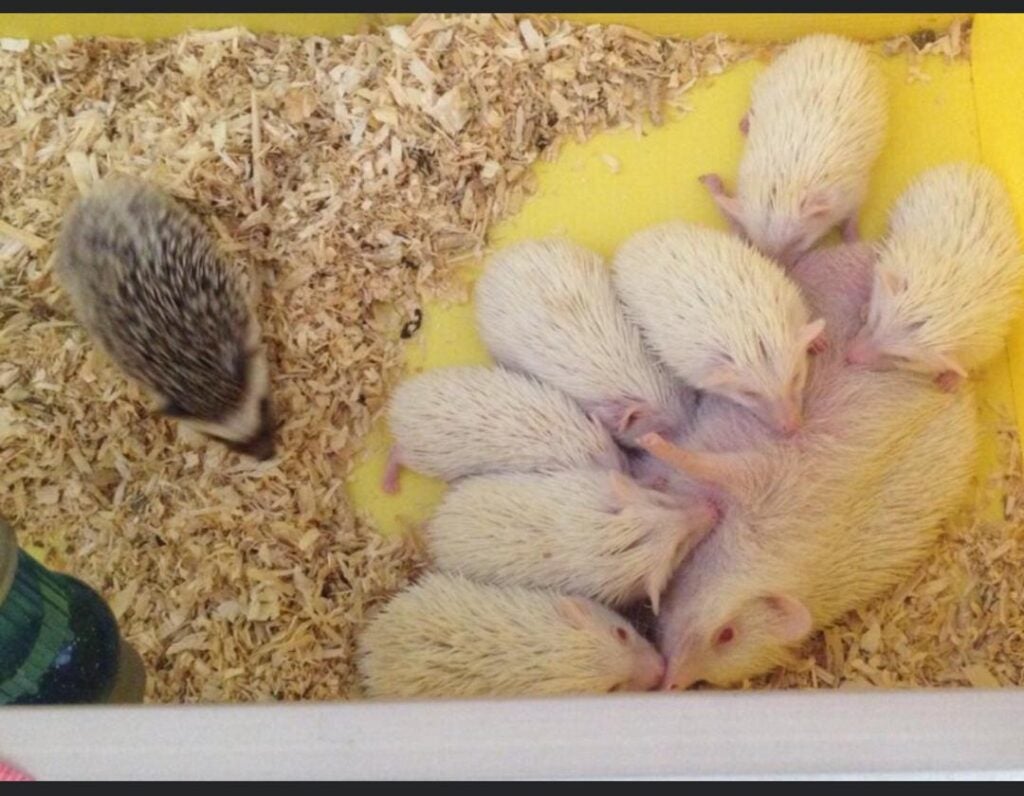
Sher Lynn’s advice on keeping exotic animals is that you shouldn’t fear them.
“You have to make sure you have time to bond with them. Keeping an exotic pet is not a hobby. You need a lot of time to care and understand them.”
“Make sure you keep their environment clean and provide them with big tanks of cages if possible. They need space to move too!”
It is cheap to own an exotic pet because they are so wide-ranged. They range from the expensive, exclusive ones to the common ones.
“It’s really up to what you’re interested in. I would say the commonly acceptable reptile is the leopard gecko. They range from RM60 to RM1600 depending on their genes.”
“Their habitat can be either a simple shoebox container or a fancy terrarium.”
“I think anyone can afford an exotic pet. It is definitely cheaper than having dogs or cats.”
Caven owns pet snakes
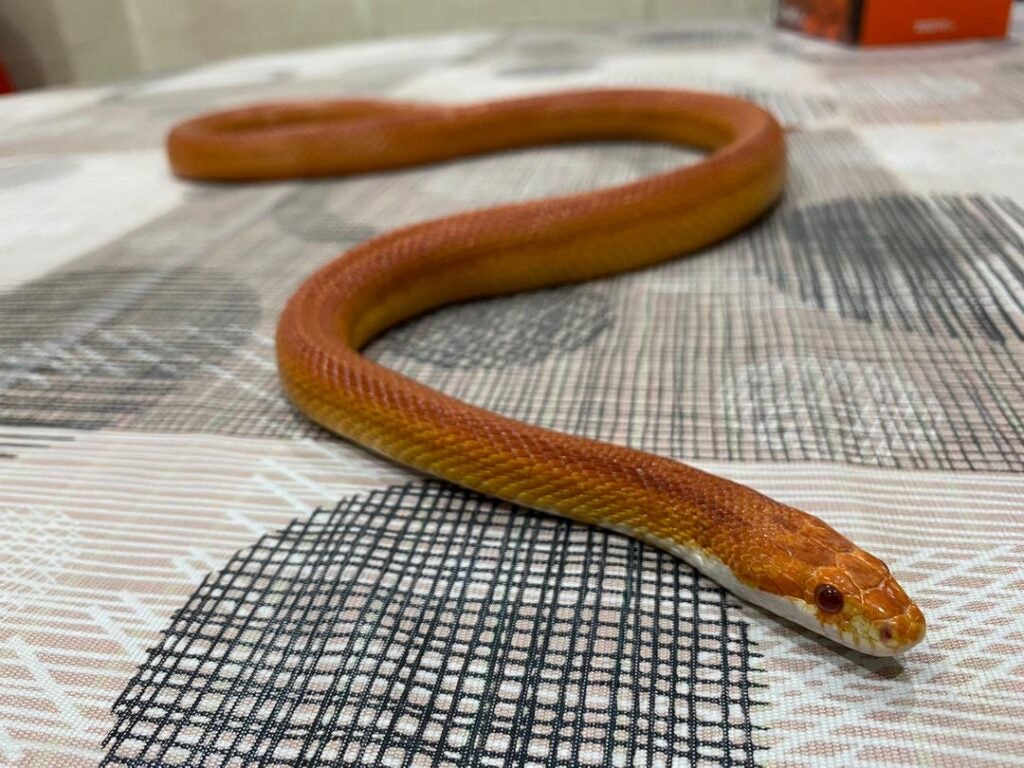
Caven has three corn snakes that he got from a pet fair and his breeder friend. They are named Ameow, Ahbut, and Ahbing.
“My mother doesn’t like furry animals because she’s allergic to their fur. Plus, she’s a very hygienic person.”
“Due to her habit, I also developed the same symptoms. However, it’s ‘terbalik’. I like furry animals but I can’t pet them because I’m allergic.”
He said that his snakes are not the first exotic animal that his family owns. His father once owned iguanas, geckos, and also bearded dragons.
“My snakes are the first exotic pets that I own. I had no idea I would actually like them until I got them.”
“I was like ‘Woah, snakes are so cool!’, and they’re not as vicious as depicted on those stereotypical channels and platforms.”
“My friends would be shocked when they saw my snakes. Some would even feel geli about the idea of having snakes, but I generally do not bother about what they think.”
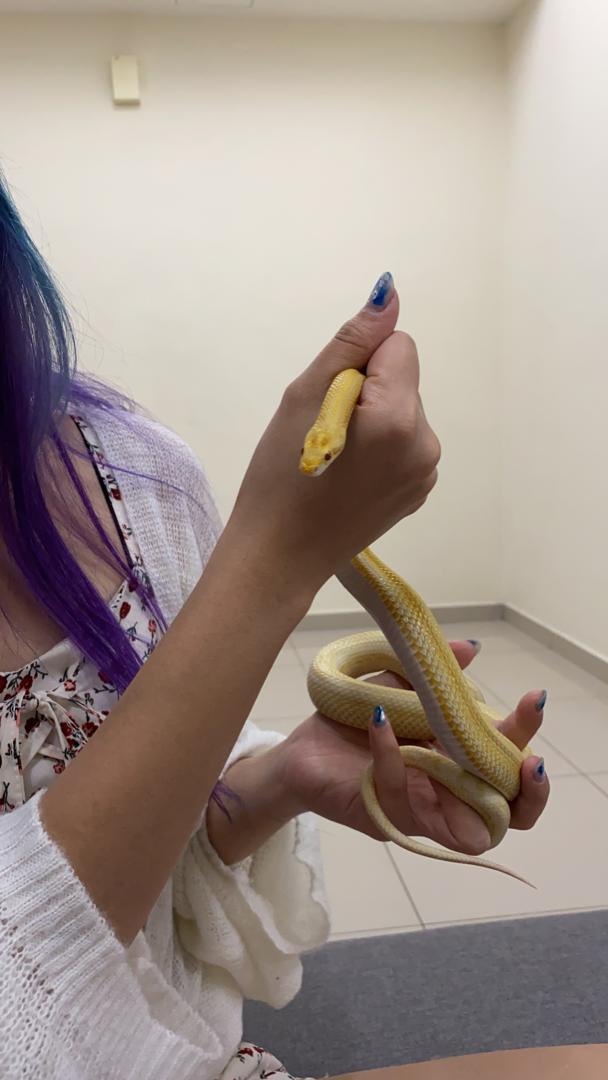
“They are gentle, smooth, and quiet. However, when they attack, they do not hold back. They only attack when they feel intimidated and when they are hungry. They also attack when they’re shedding because they’re more sensitive at that moment.”
“So, after I got the first one, I decided to buy the second one and a third one. I hope to have more in the future.”
“I keep them separated from each other so they would not fight.”
Corn snakes are very timid and gentle, unlike pythons or hognoses which are more aggressive. Caven said his snakes will become pale when they are shedding and that’s how he knows it’s time.
“Every time I check up on them, they’ve already done shedding. I’ve never seen them in action so far.”
Caven claimed that he only feeds his snakes live mice while some people would feel them frozen mice.
“It’s a little bit cruel, but if I keep frozen mice in the fridge, my mother will kill me!”
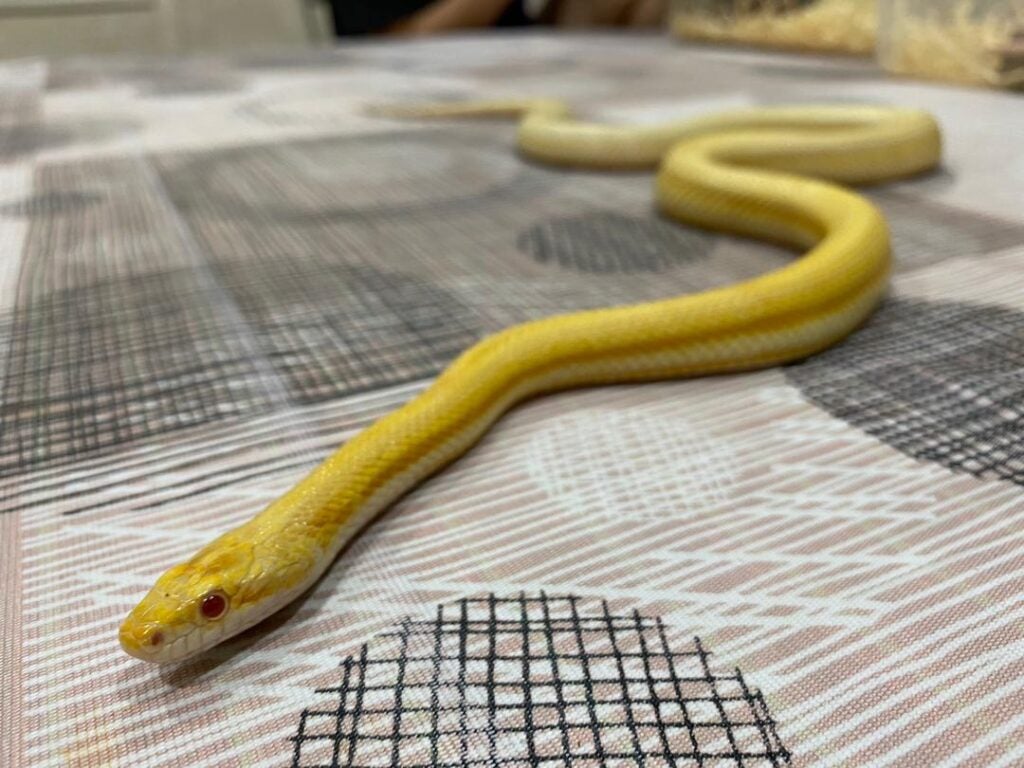
After the snakes eat, Caven will clean the snakes and their cages as it’s also the time that they will poop.
“I only rinse them with warm water and then I’ll do the cleaning. I’ll change the bedding and then put them back.”
There are special beddings especially for snakes called aspen bedding which is non-toxic for snakes. Some other bedding might contain materials that’ll harm the snakes. That’s why, Caven says, it’s better to purchase beddings from exotic pet stores.
“It’s not expensive to keep the snakes since their food and the bedding are cheap. The expensive thing is the snakes themselves, and their cages.”
Caven keeps their cages at room temperature so it’s not too cold nor too hot.
“Some people put heat lights for the snakes at one corner so they can get warm there if they’re cold.”
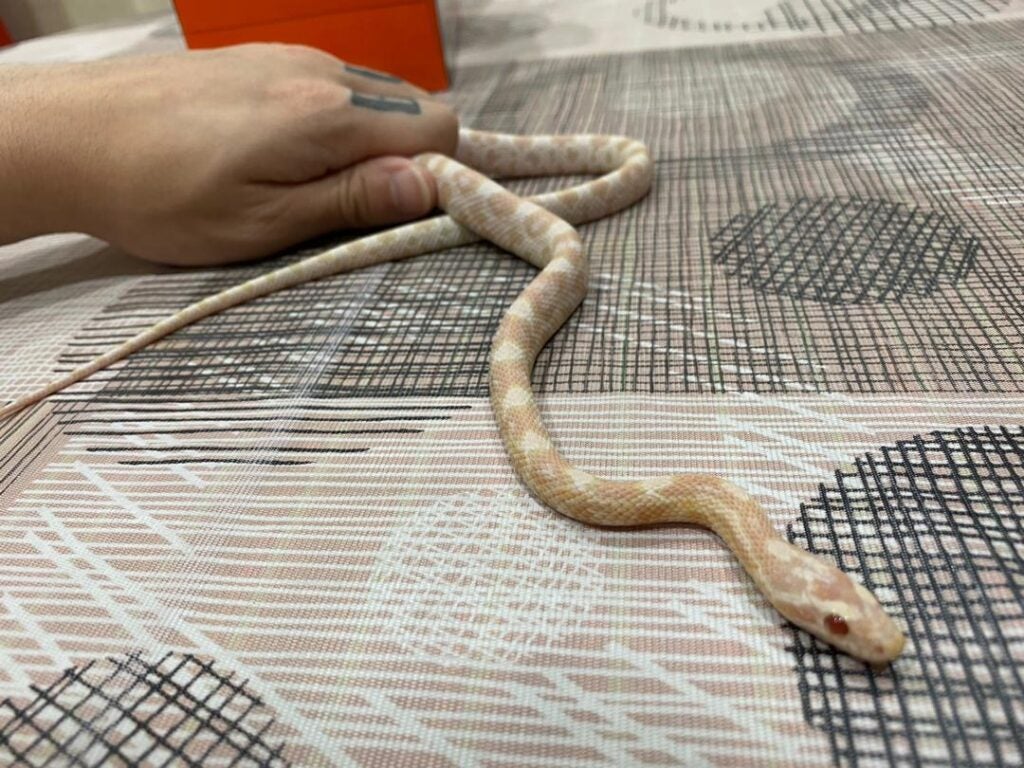
Caven wishes to get a ball python in the future.
“Although exotic pets look vicious, with proper care and treatment, they can be very cute too.”
Some exotic animals require special environments, some would require a certain temperature and some would not. Special attention is required if you want to rear an exotic pet.
“To be frank, they’re relatively easier to take care of compared to cats and dogs as they do not need a great deal of attention.”
“However, their food is kind of gross and this can disgust a lot of people. You need to have the mental preparation for this.”
“For me, my snakes are easy because I only feed them once a week or once every two weeks. In addition, I don’t need to spend so much money on them.”
“Buying a snake is a little expensive but their food and daily expenses are cheap. If you want to own them, you’ll be able to get a common species as long as you have a bit of saving.”
San keeps a Tarantula named Tata

Aside from having a fluffy cute little Pomeranian, San also has a pet that people will cringe at the name of it.
“I have a Brazillian whiteknee tarantula that I got from a pet fair and its name is Tata. I have it since December 2019.”
“I’m actually not sure about its sex. It’s still too small to identify the sex.”
The Brazilian whiteknee tarantula is a species from Brazil that’s usually kept as pets. The most distinctive part of this species is the white colour on its knees, which it is named after.
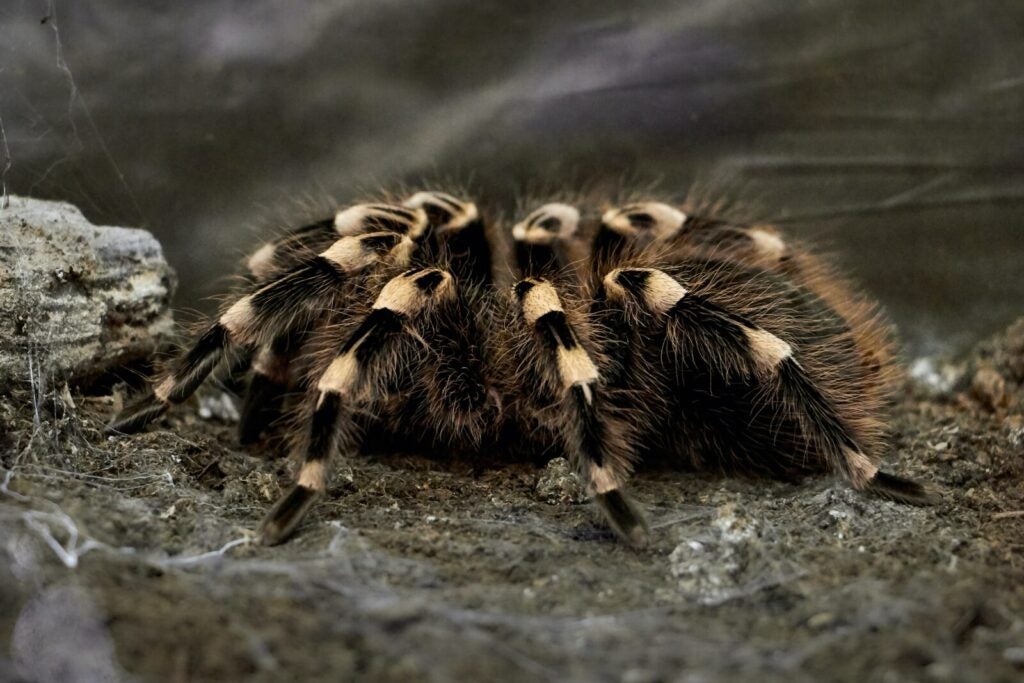
https://unsplash.com/photos/xvrnLb8VyVY
San said that she got Tata just for fun.
“I like to observe the web-building, burrowing, and hunting of it. I think it’s quite interesting.”
“However, unlike other spiders, tarantulas don’t catch their prey by web-building, hence, they rarely make webs. I’ve never seen Tata making any webs so far.”
“I don’t talk to Tata like I talk to my dog. I don’t think it’ll understand me.”
Her family did not mind her keeping Tata. As long as she keeps it in its cage, they are fine with it.
San claimed that taking care of a tarantula is easier than taking care of her dog.
“I just keep it in a glass terrarium with a substrate of coco fiber, bark, or spider life substrate mixed with moss.”
“You can also get a ready mixture from the pet store.”
“Thankfully I haven’t had any accidents with it yet. Tata is a good tarantula, it won’t run away from its cage.”
San said Tata is quite scared of humans. Whenever she opens its cage during feeding time, it will try to run around and hide.
“So far, Tata hasn’t shown any signs that it’s okay with me approaching it.”

When she just got it, San fed Tata with one to two crickets per week, but now she switched to feeding it with mealworms.
“It’s not that expensive taking care of Tata. Mealworms are only RM2 for a small cup. It can last for an entire month.”
She bought Tata when it was just one month old and she said it was a little troublesome taking care of a relatively young tarantula.
“Since it is still small, it’s hard to find food that’s suitable for it. Tata could only eat tiny mealworms. The bigger worms will hurt it.”
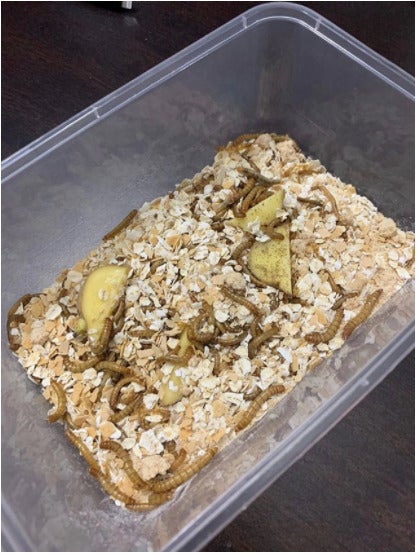
San said that Brazillian whiteknee tarantulas are venomous — however, their venom was not considered to be medically significant.
“I’ve not gotten bitten before because I never took it out from its cage before. I have to be extra cautious when I’m handling it.”
“This species of tarantula is usually somewhat defensive. They have urticating hairs that can be quite irritating to the human skin. Since their urticating hairs are their primary defense, they won’t usually bite unless they’re in real danger.”
“Some of my friends are scared of Tata. However, I will share more information about tarantulas with them and educate them about the species.”
“If I get the chance, I might get more tarantulas.”
San advised to always ask permission from your family about keeping exotic pets if you live with them.
“Not everyone is okay with exotic animals. Make sure your family or housemates are fine with them before taking the next step.”
“However, most of the time, having an exotic pet is still unacceptable to some people.”
“Also, think twice before making the decision. You don’t just handle the animal itself. You also have to handle their food which sometimes can be even grosser than the animal itself.”
“I think there is a potential for the exotic pet market in Malaysia. I feel that more and more people are open to the idea of keeping unconventional pets.”
“Who knows? We might see a boom in the exotic pet industry in a few years.”
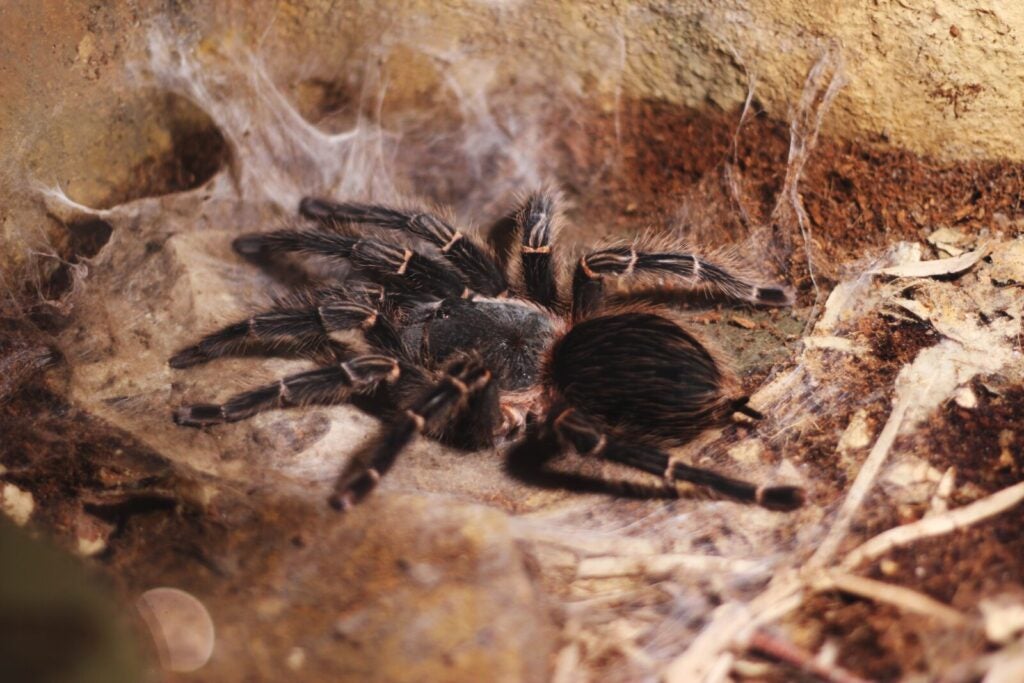
https://unsplash.com/photos/pLyekKpjXH4
In conclusion, exotic animals are not as scary as they seem. They are often even gentler than conventional pets. There are still stigmas surrounding exotic pets, but if people are willing to accept them, maybe exotic pets may become the conventional pets that people keep as well.
For more stories like this, read: We’re Muslims And We Love Dogs — Here’s Why It’s Not Haram and 3 things I Learnt After Working in a Pet Shop for Two Months.
More from Real People
Tales From Inside a UNHCR Centre by 39 YO Refugee living in Malaysia
This story is about life in a UNHCR waiting room, where pain, hope, and patience collide. Every person carries a …
“It’s Important to Have A Place to Be Yourself” Shares 32 YO Man Who Frequents Men-Only Club that Got Raided
This is the story from a gay man that frequented the wellness club that got raided and made headlines recently …
She’s a Single Mom With 4 Kids and Severe Asthma — And Now the Landlord Wants Them Out
In Subang Perdana, a Malaysia Indian mother of four is doing her best to survive — raising her children alone …
















